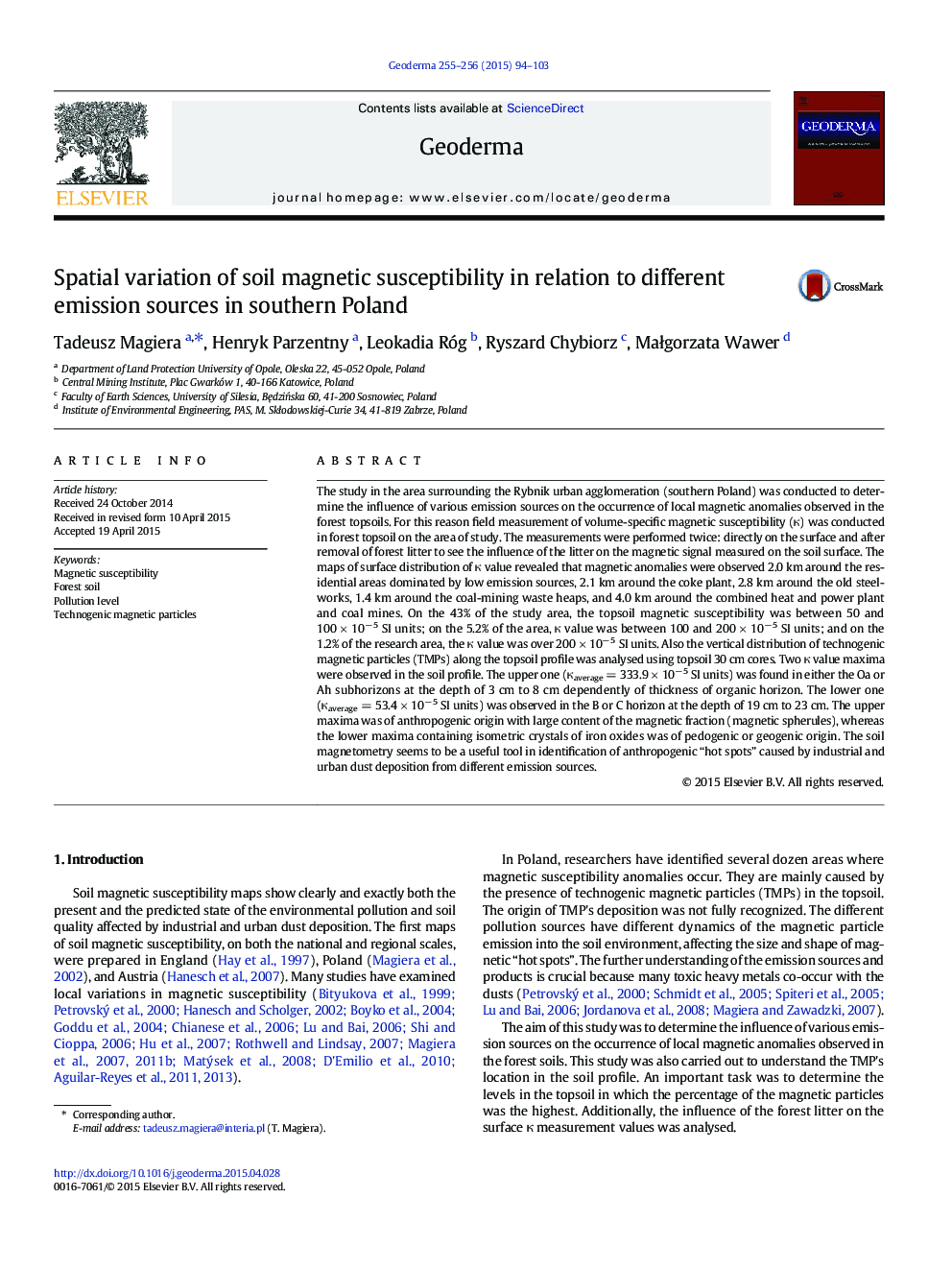| کد مقاله | کد نشریه | سال انتشار | مقاله انگلیسی | نسخه تمام متن |
|---|---|---|---|---|
| 4573149 | 1629458 | 2015 | 10 صفحه PDF | دانلود رایگان |
• The shape and range of “magnetic hotspots” are determined by kind of emission sources and local wind conditions.
• The depth of TMPs accumulation was determined by organic horizon thickness.
• Technogenic ferrospheres and cenospheres mainly occurred in the O and Ah horizons.
The study in the area surrounding the Rybnik urban agglomeration (southern Poland) was conducted to determine the influence of various emission sources on the occurrence of local magnetic anomalies observed in the forest topsoils. For this reason field measurement of volume-specific magnetic susceptibility (κ) was conducted in forest topsoil on the area of study. The measurements were performed twice: directly on the surface and after removal of forest litter to see the influence of the litter on the magnetic signal measured on the soil surface. The maps of surface distribution of κ value revealed that magnetic anomalies were observed 2.0 km around the residential areas dominated by low emission sources, 2.1 km around the coke plant, 2.8 km around the old steelworks, 1.4 km around the coal-mining waste heaps, and 4.0 km around the combined heat and power plant and coal mines. On the 43% of the study area, the topsoil magnetic susceptibility was between 50 and 100 × 10− 5 SI units; on the 5.2% of the area, κ value was between 100 and 200 × 10− 5 SI units; and on the 1.2% of the research area, the κ value was over 200 × 10− 5 SI units. Also the vertical distribution of technogenic magnetic particles (TMPs) along the topsoil profile was analysed using topsoil 30 cm cores. Two κ value maxima were observed in the soil profile. The upper one (κaverage = 333.9 × 10− 5 SI units) was found in either the Oa or Ah subhorizons at the depth of 3 cm to 8 cm dependently of thickness of organic horizon. The lower one (κaverage = 53.4 × 10− 5 SI units) was observed in the B or C horizon at the depth of 19 cm to 23 cm. The upper maxima was of anthropogenic origin with large content of the magnetic fraction (magnetic spherules), whereas the lower maxima containing isometric crystals of iron oxides was of pedogenic or geogenic origin. The soil magnetometry seems to be a useful tool in identification of anthropogenic “hot spots” caused by industrial and urban dust deposition from different emission sources.
Journal: Geoderma - Volumes 255–256, October 2015, Pages 94–103
